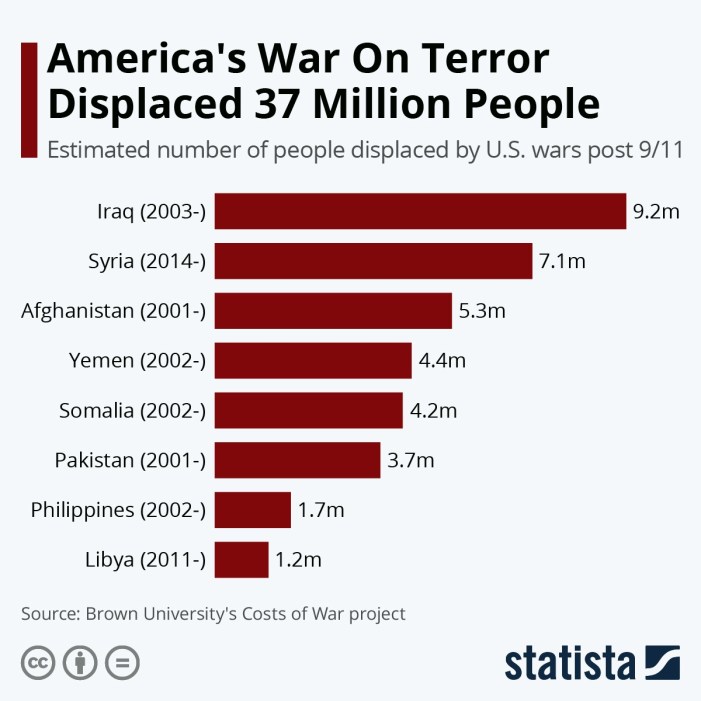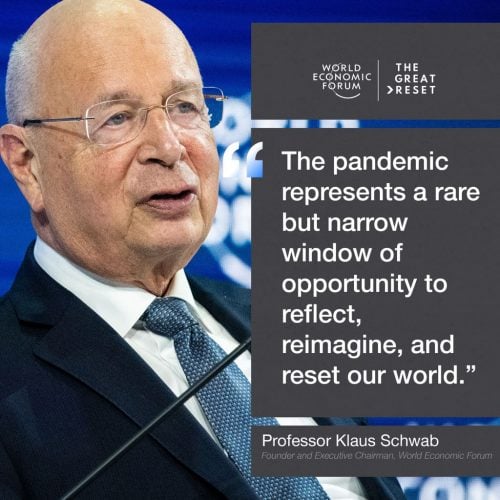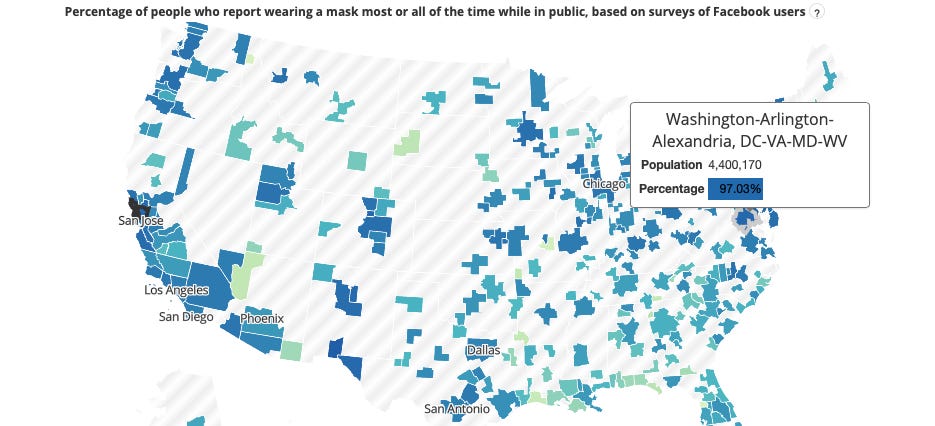Washington’s China bashing started with Obama through his Asia Pivot policy, reinforced by Trump and Biden might go even further than Trump.
So far, China bashing does not seem to be beneficial to Washington. Even in the long run, there is no guarantee that it will bring any positive results. In fact, it will hurt not only the economies of the two rivals but also the global economy.
The humanity is threatened by pandemics, climate change and other global enemies. It is not the time to engage in counterproductive China bashing. It is not too early that the two super powers show leadership for the difficult fight against these enemies.
In this paper, I am asking why Washington is so eager to continue its China bashing policy. Then, I will discuss the means deployed in order to carry out the policy. Finally, I will examine the probability of its success.
The Objective of China Bashing
For last thirty years, China has been the global factory where the American firms made large profit owing to the low cost hardworking and well disciplined Chinese workers. The imports of low priced Chinese goods allowed Americans to avoid inflation and save money and finance the education of their children and pay a part of medical bills.
Then, we ask why the China bashing? Politicians, think tank people, the media have been warning about China’s threats. But, what threat? We know that China is no military match with the U.S. military might. We know that China cannot be a political threat to America, for Washington controls the U.N. the E.U. and countless alliances. China cannot be an economic threat to the, U.S., because China’s economic success is beneficial to the American economy, as it has been so for last thirty years.
Is China threatening the U.S. to leave Asia? Well, President de la Chine, Xi Jinping does not want it. Xi Jinping says that there is no such threat.
“The vast Pacific Ocean must have enough space to accommodate both China and the Unites States. (Feng Zhang and Richard Ned Lebow. Taming the Sino-American Rivalry, Oxford University Press 2020. p.111)
What seems to be China’s threat to Washington is the ideological threat. We can see this in the statements of major national and international decision makers in the U.S. and the West.
President Obama made the following statements about the Trans Pacific Economic Partnership (TPP). I will come to TPP later.
“The TPP puts American workers first and make sure we write the rule of road in the country…Other countries should play by the rule that America and our partners set and not the other way around.”
“With the TPP, we can rewrite the rules of trade and benefit American middle class… If we don’t, the competitor who does not care our value, like China, will step in fill the void.”
Stephen K. Bannon, former chief strategist for Trump’s government said this.
“If we blink, we’re heading on a path of the war (with China) to a kinetic war, if we don’t stop it right now…this is not a cold war. This is a hot war information and economic war, sliding rapidly. We are inexorably going to be drawn into an armed conflict, if we don’t stop it now”
“I think ultimately, success is regime change“, adds Bannon.
On the other hand, Mike Pompeo the U.S. Secretary of State said:
“Beijing poses a new kind of challenge: an authoritarian regime that’s integrated in to the West in ways that the Soviet never was…”
On his part, Vice-President Mike Pence said:
“So far, it appears the Chinese Communist Party resists a true opening and converge on globalization”
The China Research Group in UK made this statement:
“The cost of doing business with autocratic regimes is that you don’t just import technology. You also import their values and make yourself dependent on their policies.”
Jens Stoltenberg, former NATO General Secretary had this to say:
“The focus is no longer on technology and economics…It is now China’s threat to the Western way of life.”
What these statements of some of the key decision makers in the West are saying is that the Chinese socialism with Chinese characteristics are threatening the Western values and the Western free-market democracy.
This is really incredible, because this indicates that the West is not convinced of the superiority of its own political and economic system over Chinese hybrid regime of the socialist governance cum the free-market economy.
If the Chinese values are threatening the western values, the best way to counter them would be the improvement and the strengthening of the western values instead of allocating time and resources to China bashing. Another possible approach would be the creation of better global values through cooperative integration of the western values and the Chinese values.
Strategic measures of China Bashing
China bashing of Washington is based on the assumption that the undermining of the Chinese economy is the best way of forcing China to abandon its hybrid regime and to integrate more into the rules and laws determined by Washington. The anti-China economic measures of Washington include those which are designed to damage the production system of Chinese goods and services on the one hand and, on the other, those measures which are intended to curtail the exports of Chinese gods and services.
The measures designed to restrict China’s capacity to produce goods and services include the prevention of China’s access to advanced technology of the West, the promotion of re-shoring of American firms in China and the possible sanctions on Chinese imports of raw materials and intermediate goods.
For the time being, the U.S. has taken some measures to prevent the technology transfer. The Department of Commerce prohibits American companies to provide services to selected Chinese telecommunication companies including Huawei, ZTE Corporation. The Department’s Bureau of Industry and Security (BIS) has a black list of Chinese firms, research centers and universities which are involved in the development and trade of telecommunication technology. The black list has 140 entries.
The Justice Department punishes those who steal strategic information related to technologies. Washington limits the number of Chinese Americans who work for government-run establishments. Washington limits the number of Chinese students who come to study. In addition, the number of Chinese news reporters working in the U.S.is limited. These measures may not have created major problems for China for the time being. But the government of Biden may go further and China is likely to react more strongly.
Trump has launched the process of bringing back American firms from China to the U.S. But the possibility of success does not look promising. The American Chamber of Commerce in Shanghai has conducted, recently, a survey with 200 American firms in China. Only 3% of them have shown their plan to come back to the U.S. This is understandable, for the re-shoring is costly and it would not be easy to handle high labour cost in the U.S.
For the time being, the most visible anti-China policy is the trade war designed to curtail exports of Chinese goods and services. In 2018, the value of U.S. exports to China was USD 120.3 billion, whereas that of Chinese exports to the U.S. was USD 539.5 billion resulting in U.S. trade deficit of USD 419.2 billion.
In 2018, Trump declared a trade war against China. Trump imposed a tariff rates varying from 10% to 25% on Chinese goods worth of about USD 400 billion. This policy was successful in cutting the inflow of Chinese goods by 16%. And, the U.S. trade deficit with China fell to USD 160 billion. Thus, as far as the deficit is concerned, Trump got what he wanted.
But, did this harm China? The answer is no. It is true that Chinese exports to the U.S. fell by 16%. What is surprising is this. Chinese exports to other trade partners in Asia rose by 26%. Thus, the loss of the American market was offset by the increased access to alternative markets.
Besides, the increased tariffs on imported Chinese goods lead to increased price of these goods thus increasing the burden of family budget. Moreover, the decrease of imports of Chinese goods means the loss of great number of jobs related the distribution of these goods.
Moreover, Washington should know that American deficit with China has special implication. A great part of Chinese exports to the U.S. is products of American firms in China. Hence, the cut in Chinese exports to the U.S. means a cut in the exports of goods produced by American firms in China. A decrease in exports from China to the U.S. means a profit reduction for American firms in China.
Washington has indirect ways of undermining Chinese economy. It is the policy of putting pressure on the Chinese economy through its alliances. There are bilateral alliances with Asian countries which include Australia, India, Japan, Malaysia, South Korea, the Philippines and Vietnam.. There are multilateral alliances including U.S.-Japan alliance, the Korea-U.S. alliance and the trans-pacific partnership (TPP) composed of 12 countries. There is the four- country alliance (Quad) composed of Australia, India, Japan and the U.S.
The function of these alliances is to serve the interests of Washington in return for Washington’s assistance for trade and security. Most of these alliances have assisted Washington’s China containment policy.
However, as the Sino-American conflict intensifies, these alliances will be asked to play more active role of undermining the Chinese economy reducing the trade with China and even participating in economic sanctions against China. When this happens, some of these allies, especially South Korea, will find themselves in a very difficult situation where it has to find a balance between the American security guarantee and trade interests for which they rely on China. This could undermine the effectiveness of the alliances as China bashing tool.
The alliance on which Obama relied heavily is the TPP. It is supposed to be free trade organization (FTA). As it was shown above, it is composed of 12 nations (before the Trump withdrew). It appears that Joe Biden, President-elect of the U.S. might come back to it. If the U.S. rejoins it, it will have, as member countries, Australia, Brunei, Canada, Chile, Japan, Malaysia, Mexico, New Zealand, Peru, Singapore, the U.S. and Vietnam.
The effectiveness of TPP as instrument of China bashing is limited because its four members (Brunei, Malaysia, Singapore and Vietnam) are member of ASEAN (Brunei, Cambodia, Indonesia, Laos, Malaysia, Myanmar, the Philippines, Singapore, Thailand, and Vietnam) which depends much on China for trade and investments.
There is the regional multilateral trade organization which just started to operate. It is the Regional Comprehensive Economic Partnership (RCEP). RCEP composed of the 15 member countries including of ASEAN members plus Australia, China, Japan, South Korea and New Zealand. We must know that all of the 10 members of ASEAN and the five additional member countries all depend much on trade with China. Moreover, RCEP will be led by China.
Therefore, RCEP will further weaken TPP as a China bashing weapon. Besides, the regional economy of Asia will depend much more on RCEP than on TPP. RCEP has much better prospect for economic growth than on TPP. The TPP with the U.S.as member accounts for only 10% of global population although it represents 40% of global GDP. By contrast, the RCEP represents 30% of global GDP and 30 % of the world population. Although RECP has a lower GDP compared to TPP, it has the population of countries which have much more dynamic economies.
Will it succeed?
The foregoing discussion seems to indicate that, in the short run, economic war does not seem to be a great weapon of China bashing. Even in the long run, there is no guarantee that Washington’s China bashing will bring regime change in China.
The long-run prospect of the Sino-American economic war depends on the global economic and political environment which is expected to change because of the corona-virus crisis. The post-pandemic world is likely to have these characteristics.
First, the scope and the space of globalism will be limited. There will be more regional or sub-regional globalism and multilateral trade organization. This will not help China bashing.
Second, in order that the China bashing works, Washington must satisfy two conditions. On the one hand, the American economic must grow sufficiently so that it can provide moral, economic and security assistance to allies which participate. On the other hand, the growth of the American economy must contribute to the welfare of all Americans, not just the elite groups. To justify China bashing, Washington must prove the superiority of the American values and this requires a fair distribution of the fruits of economic growth to all Americans.
The prospect of the American economy does not look optimist
Up to now, the American economy has grown so much that its per capita GDP is USD 63,000. There is a limit in the growth of GDP because of declining working force, depletion of material resources, declining productivity of technologies and other factors. It is estimated that the rate of the potential growth of the American economy is about 1.5% as against 6% for the Chinese economy.
The American economy being the most neo-liberal economy has produced extremely unequal income distribution, loss of full-time jobs, decreasing consumer spending and the un-development or under-development of small-and medium-sized enterprises (SMEs). The growth of the American economy has not been able to distinguish itself as the provider of welfare to the American people.
The pandemic has rendered more difficult the growth of the American economy and the provision of the public welfare. The first wave of the pandemic is not over yet; the second wave is there; the third wave may soon come. Soon, 400 thousand lives may be lost; more than 15 million people may be infected.
The disastrous impact of the pandemic on the American economy could be so great that we can’t have a realistic estimate of the damage it would cause. But, what is worrisome is the future of SMEs which are the major job creating sector in the American economy. They create 66% of jobs in the U.S. It is possible that more than half of them may have closed the business for good. The recovery of the American economy depends, before anything else, on the recovery of SMEs. The American government has injected more than USD 2 trillion, but only 25% of these funds is allocated to SMEs, the rest being given to big firms. Surely, this is not the best way to recover the economy.
All these long-run factors are likely to prevent Washington’s China bashing from succeed.
In short, even in the long run, the American economy is unlikely be strong enough to make China to change its regime.
It is more than likely that the Biden government will continue China bashing to change the Chinese regime.
But, why is China’s regime change so important to Washington?
There seem to be two reasons. The first reason is a sort of quasi religious fanatic belief in the predestined mission of the U.S. to enlighten the world with “American values”. It seems to be inspired by the Project for New American Century (PNAC) initiated in 1997 by 25 individuals. It embraces two central ideas. To begin with, it believes that American leadership is good both for America and the World. Moreover, it argues that America should have strong military might to impose American values on the world.
The second reason is the willingness of the military to actively participate in China bashing. China bashing justifies the additional injection of financial resources into national defence, which means more benefits for the oligarchy composed of the defence industry, the intelligence circle and the military group (simply the oligarchy). So, the oligarchy wants China bashing.
The strategy of regime change proceeds by steps. If the diplomacy does not work, Washington provokes internal division to weaken the regime; if this fails, then send the military force to conquer. What is alarming is that such perception is shared by the intellectuals, media, politicians and even the general public.
The Washington’s policy of regime change has started with President George W. Bush. But, the Bush government focused regime change wars in the Middle East and Africa. It was the Obama government which applied the regime change policy in Asia. The principal weapon was the Asia Pivot which consisted in transferring 60% of naval and air forces to the Asia-Pacific region in addition to 50,000 troops and other measures. As for TPP, Obama wanted to use it not only for trade promotion but also, especially, for the change of Chinese economic regime into the American model of neo-liberalism.
The headache of Washington is this. If China bashing is to succeed in changing the Chinese regime, China must accept such change. But in all probabilities, China is unlikely to do so. Even if it does, there will be a limit in its regime change.
There are reasons for China’s refusal to change its political and economic regime.
First, for Chinese, the American regime is not necessarily more valuable than the Chinese regime. The ultimate raison d’être of a regime is to provide reasonable welfare to all citizens. It is possible that China thinks that Washington has failed. The credibility and the attractiveness of the U.S. democracy has been lost for two reasons To begin with, their economic growth has failed to provide fair income distribution, offer public goods such as housing,, education, public health, public safety service, The American society is one of the most racist countries. The American society is the most violent society, mass killing happens more than once every day.
Furthermore, since the imposition of neo-liberalism on democratic countries, democracy in general has lost much of its authenticity and legitimacy. To be sure, neo-liberalism has brought unprecedented GDP growth but it has fallen into the trap of boundless competition and technology development. Competition is governed by the rule of the fittest; competition ends up by the survival of the most powerful. It is far from being the democracy of the people, by the people and for the people. I presume that it is still of the people, but surely it is neither by the people nor for the people.
Democracy has lost much of its attractiveness. According to Democracy Index, in the period, 2005-2019, the number of countries where democracy improved declined from 83 to 57. On the other hand, in the same period, the number of countries where democracy deteriorated rose from 52 to 64 countries. The global demographic distribution of political regimes in 2019 was as follows: true democracy (4.5%), false democracy (43.2%), hybrid regimes (16.7%) and authoritarianism (35.6%).
Thus, 52.3 % of humanity live in hybrid or authoritarian regimes, while 47.7 % in democratic regimes. But, only 4.5% live in true democracy. One can debate about the reliability of these data. But, one thing sure is that democracy has been declining, because it has not been able to meet the people’s needs.
Second, even if the government of China wished to change its present regime into something similar to American regime, there is a limit to what can be done. It is so because of the fact that the Chinese regime is a result of Chinese system of thoughts cherished for thousands of years.
Values which inspire China’s political and economic regime are Daoism, Buddhism and Confucianism.
In Daoism, there is no absolute truth; truths are relative. Chinese are not dogmatic; it is neutral to rigid ideology. The communist structure of governance is chosen because it is effective in the Chinese cultural context. Here, we have the source of Chinese pragmatism.
Buddhism teaches peace, respect for living things and sympathy for others. China developed gun powder not for canon but for the joy of festivity.
Confucianism defines the relations between the governor and the governed. According to Confucianism, the interests of collective entity are superior to those of individuals. Here, we see the origin of collectivism. The head of state should behave as the father of the citizens by providing citizens’ welfare; the citizens must behave like children respecting and obeying the head of the state.
To be sure, the impact of traditional systems of thoughts has been much diluted. But, the core of Daoism, Buddhism and Confucianism is still in the mind and soul of Chinese people. If we understand these three systems of thoughts, we have an idea why Den Xiaoping and Xi Jinping have adopted the socialism with Chinese characteristics (Chinese way of thinking) in which authoritarian central government led by the Chinese Communist Party coexists in coordinated way with open free capitalist private market.
We have seen why the China’s regime change which Washington tries to impose by means of China bashing is just not realistic policy. Remember that since China joined to WTO in 2001, it has been trying to adopt rules and norms developed and imposed by the U.S. But, China can never accept the whole of American political and economic regime.
To sum up, there is little need to change Chinese regime, because China is not interested in imposing its values on other countries. China was for centuries the largest economy n the world, but it did not have the ambition to change the regime of the world. Besides, China is now too big and too powerful to be manipulated by external forces.
The world is now facing unprecedented challenges. The survival of the mankind is threatened by climate change, pandemics, wars, terrorism, worsening natural disasters and poverty of billions of people.
These challenges can be met only through concerted leadership efforts of the two superpowers. It is not too early to stop counterproductive China bashing.
*
Note to readers: please click the share buttons above or below. Forward this article to your email lists. Crosspost on your blog site, internet forums. etc.
Professor Joseph H. Chung is professor of economics and co-director of the Observatoire de l’Asie de l’Est (OAE) of the Centre d’Études sur l’Intégration et la Mondialisation(CEIM), Université du Québec à Montréal (UQAM). He is Research Associate of the Center of Research on Globalization (CRG).

![Days of the future passed: Point of no return by [Jim Miles]](https://m.media-amazon.com/images/I/418QZePcNqL.jpg) Days of the future passed: Point of no return
Days of the future passed: Point of no return




























































